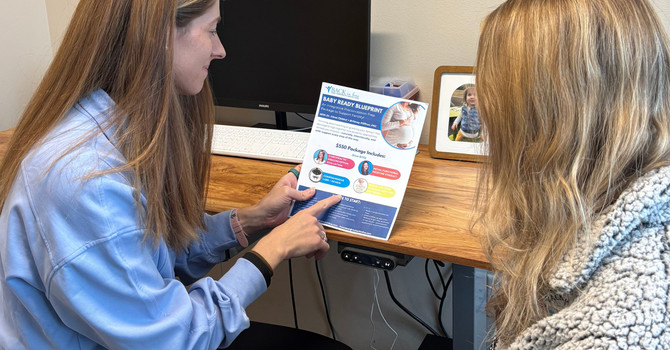
Sleep apnea is a common yet serious sleep disorder that disrupts your breathing while you sleep. It affects millions of people worldwide, and although it often goes undiagnosed, the symptoms can have significant health consequences if left untreated. Here's what you need to know about this condition, its causes, and available treatments.
What Is Sleep Apnea?
Sleep apnea occurs when a person’s breathing repeatedly stops and starts during sleep. This interruption can last for a few seconds to minutes, and it can happen dozens or even hundreds of times each night. The main types of sleep apnea are:
- Obstructive sleep apnea (OSA): The most common type, caused by a physical blockage in the upper airway, typically when the soft tissue in the back of the throat collapses and closes during sleep.
- Central sleep apnea: This type occurs when the brain fails to send proper signals to the muscles that control breathing, leading to breathing interruptions.
- Complex sleep apnea syndrome: A combination of obstructive and central sleep apnea.
Symptoms of Sleep Apnea
People with sleep apnea may experience symptoms such as:
- Loud snoring
- Choking or gasping for air during sleep
- Excessive daytime sleepiness or fatigue
- Difficulty concentrating
- Dry mouth or sore throat upon waking
- Morning headaches
- Uncontrolled blood pressure or leg swelling
Causes and Risk Factors
Sleep apnea can affect anyone, but there are certain factors that can increase your risk:
- Obesity: Excess weight can contribute to fatty tissue around the neck and throat, increasing the likelihood of airway blockage.
- Age: Sleep apnea is more common in adults, particularly those over 40.
- Family history: A family history of sleep apnea may increase your risk.
- Gender: Men are more likely to have sleep apnea than women, though the risk for women increases after menopause.
- Anatomical factors: A thick neck, enlarged tonsils, or a small jaw can contribute to sleep apnea.
Certain lifestyle factors, like alcohol consumption and smoking, can also worsen the condition.
Diagnosis of Sleep Apnea
Besides the typical presenting symptoms, people can often be triggered by your smart device. Many of today’s smart watches have a nighttime pulse oximetry feature that can be turned on. Upon reviewing your numbers, if you are consistently seeing numbers below 89%, it’s time to look into a sleep study.
Diagnosing sleep apnea typically requires a sleep study, either in a sleep center or at home with portable equipment. A sleep specialist will analyze the data to determine the frequency and duration of your breathing disruptions.
At Back in Line, we can help with this diagnosis. We have partnered with SNAP Diagnostics to help with home sleep tests. They then can help find a local or national DME that can get you set up with the equipment you need to successfully treat your sleep apnea. SNAP Diagnostics sends all the equipment you need for the sleep study directly to your home. They test you by three different modalities including a pulse oximeter, nasal cannula and chest belt. You wear these things for three days in a row, in the comfort of your own home. This is just one alternative to a sleep lab study.
Treatment Options
There are several effective treatments available for sleep apnea, depending on the severity and type of the condition:
- Continuous Positive Airway Pressure (CPAP): This is the most common treatment for obstructive sleep apnea. A CPAP machine delivers a constant stream of air through a mask to keep the airway open while you sleep.
- Lifestyle changes: Losing weight, quitting smoking, and avoiding alcohol or sedatives before bed can improve sleep apnea symptoms.
- Oral appliances: These devices, worn in the mouth while sleeping, can help reposition the jaw and tongue to keep the airway open.
- Surgery: In severe cases or when other treatments aren’t effective, surgery may be recommended. This could involve removing excess tissue from the throat or correcting structural abnormalities.
- Inspire implanted device: a device that is surgically placed under the collarbone that sends gentle pulses to your airway muscles to keep your airway open while you sleep. Here is more information about this device. Several Physicians as PCI here in Cedar Rapids are qualified to place these devices. Call their office today if you have questions or want a consultation.
Why is sleep apnea so important to diagnose and treat? What are its long-term effects?
Sleep apnea reduces sleep quality, and the effects of poor sleep are compounded by how sleep apnea affects oxygen levels in the body.
Accordingly, obstructive sleep apnea has been associated with a higher risk of a diverse range of health problems, including:
- Car accidents from drowsy driving
- Cardiovascular diseases like high blood pressure, stroke, heart failure, heart disease, and an abnormal heartbeat
- Metabolic disorders including type 2 diabetes
- Pulmonary hypertension, which is high blood pressure in the arteries of the lungs that places excess strain on the heart
- Thinking problems such as impaired memory and concentration
- Mood disturbances including irritability and a higher risk of depression
- Nonalcoholic fatty liver disease, which is an increase in fat deposits in the liver that can contribute to serious liver damage
- Anesthesia-related complications during surgery
In central sleep apnea, the complications that can occur depend largely on the underlying medical issue causing breathing to be disordered.
Conclusion
Sleep apnea is a serious condition, but with proper diagnosis and treatment, most people with the disorder can lead normal, healthy lives. If you experience symptoms of sleep apnea, don’t hesitate to consult a healthcare professional. Early intervention is key to managing the condition and reducing the risk of related health problems.
For more information and resources on sleep apnea, visit the Sleep Foundation’s website.



